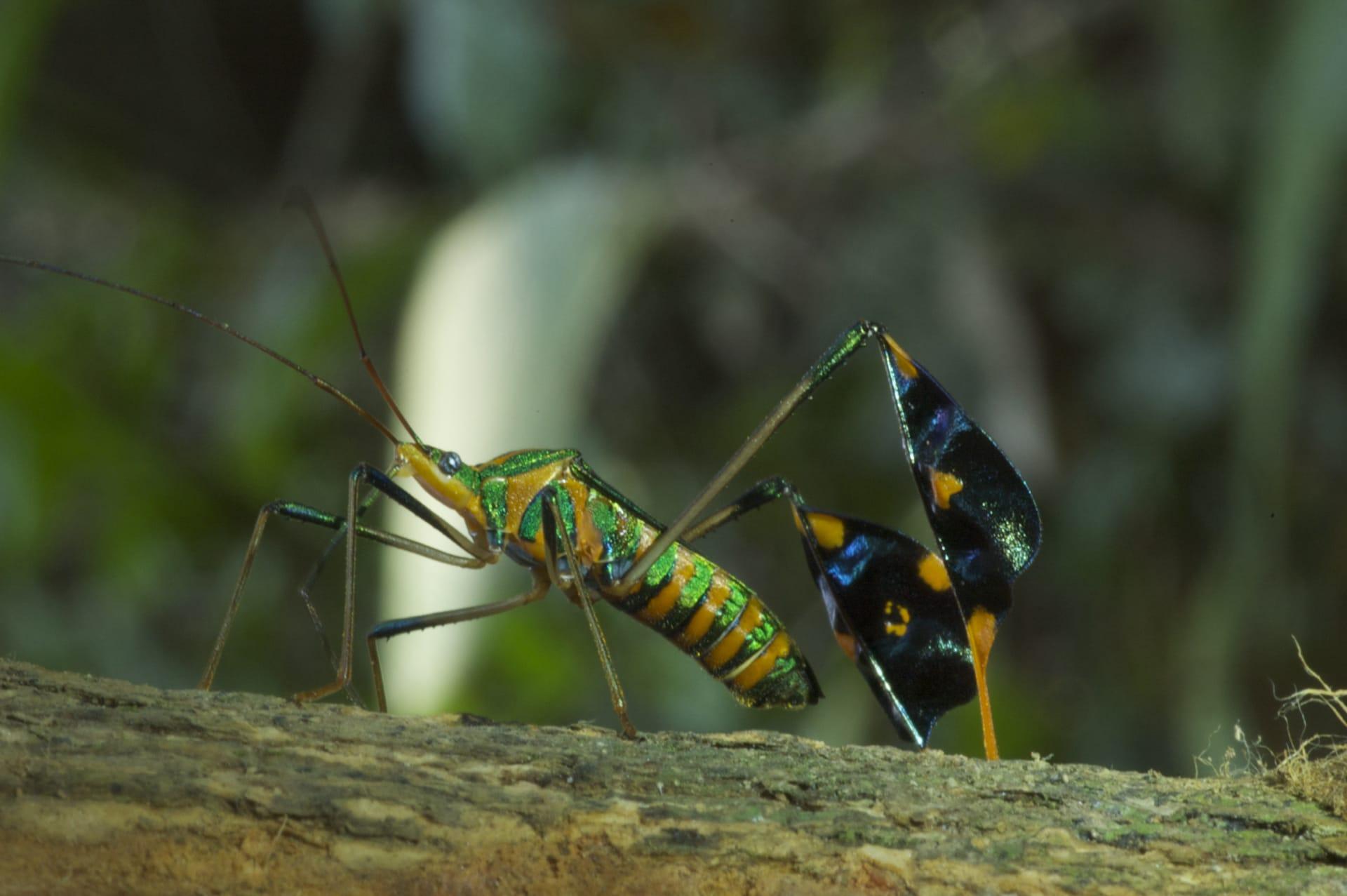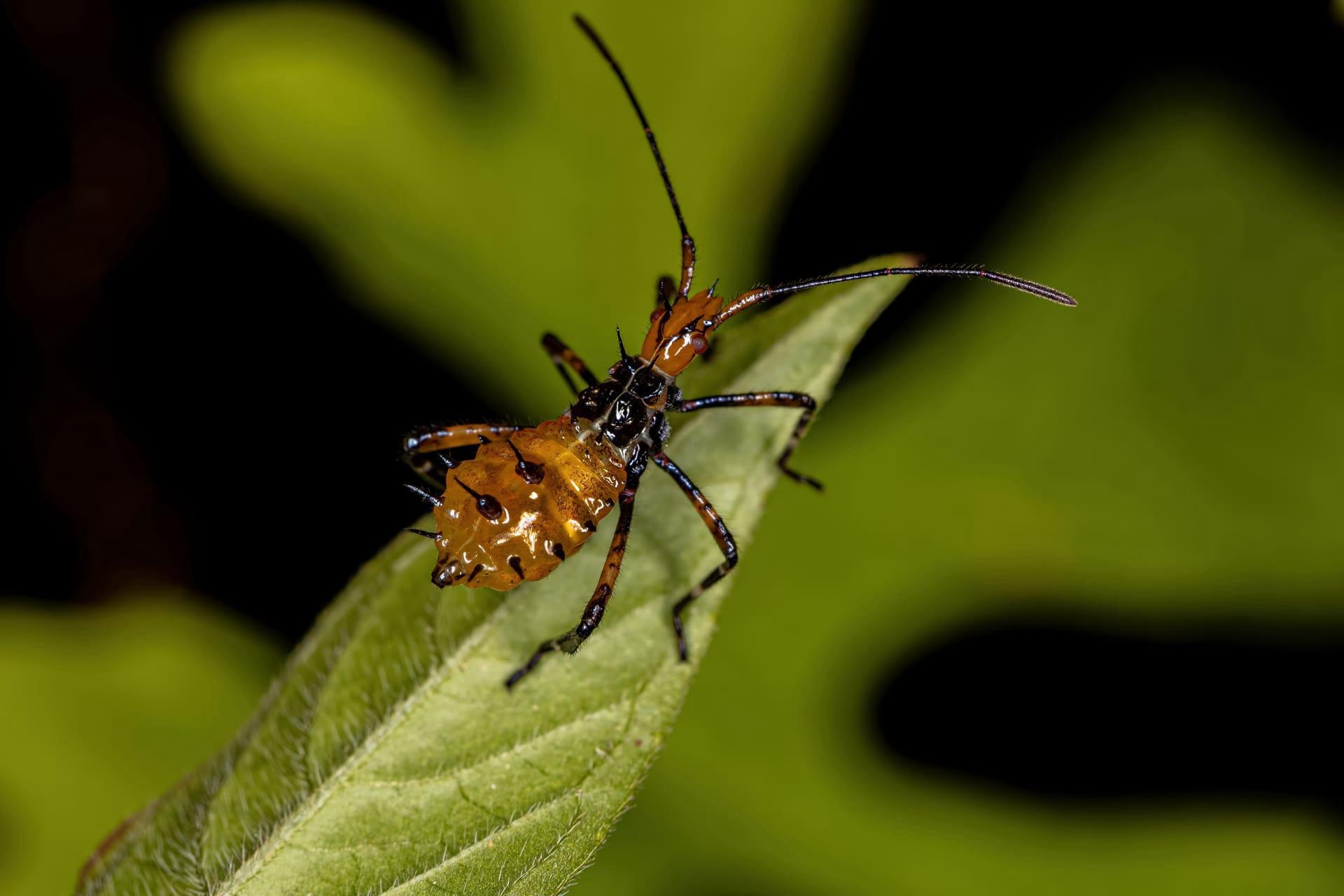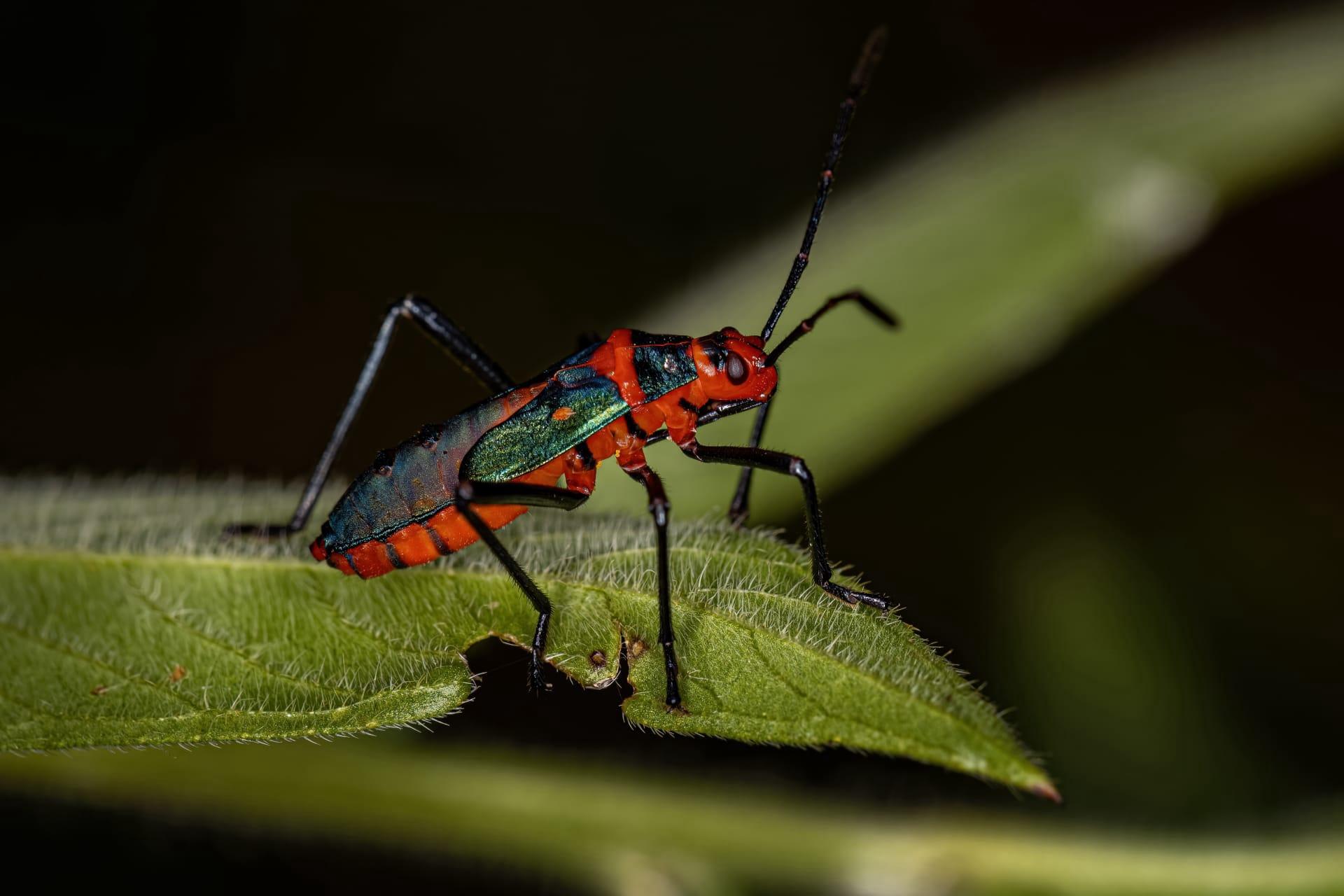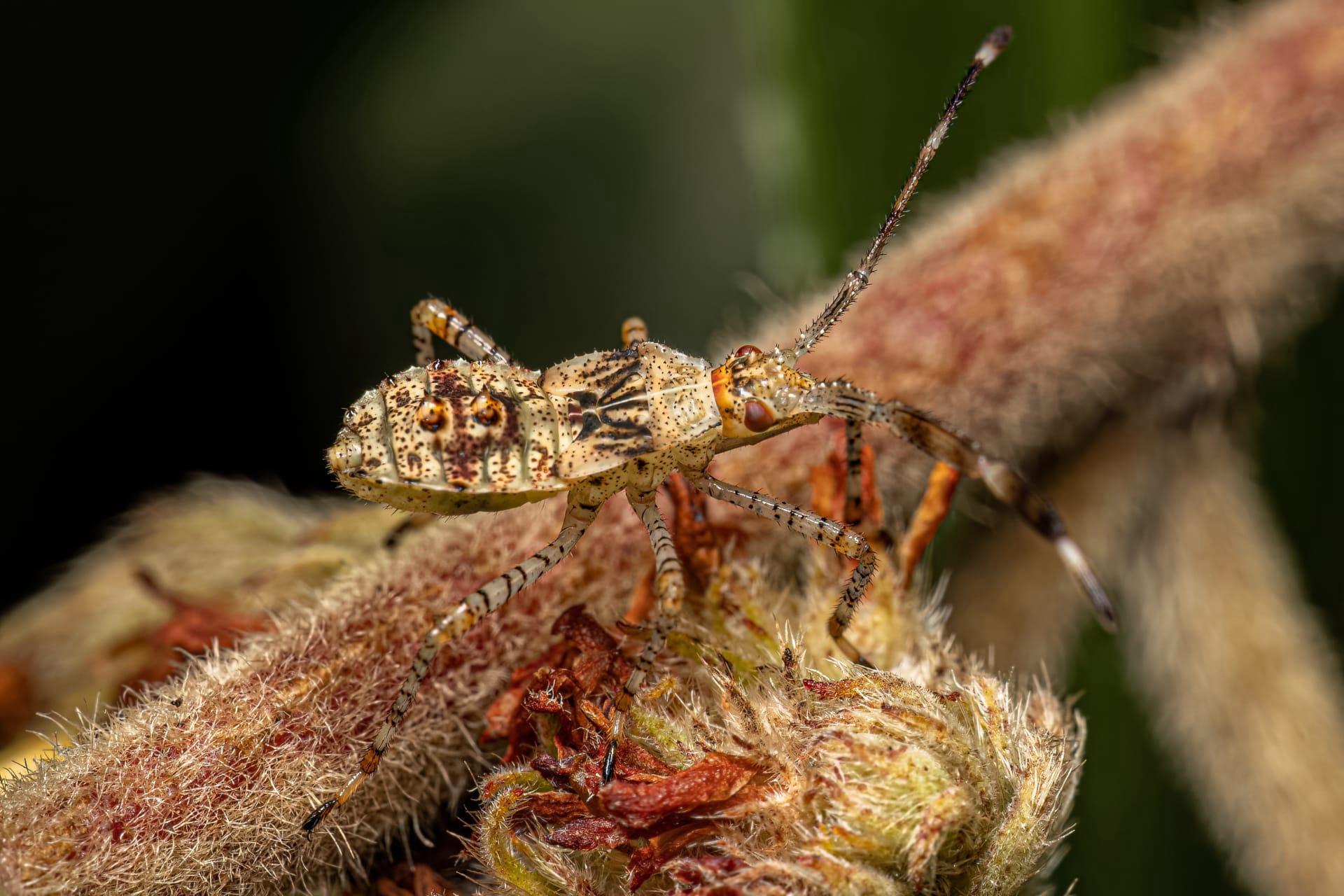1
Leaf Footed Bugs, belonging to the family Coreidae, are named for their leaf-like expansions on their legs. These expansions are not just for show; they play a crucial role in their camouflage. When resting on tree bark or among foliage, the leaf-like structures on their legs blend seamlessly with the environment, making them nearly invisible to predators. This camouflage is incredibly effective, especially in their natural habitats, which include wooded areas, gardens, and fields. The size of these expansions can vary significantly among species, with some having very pronounced leaf-like structures, while others are more subtle. The effectiveness of this camouflage is not just about the shape but also the coloration, which often mimics the hues of their natural surroundings.
Another fascinating aspect of Leaf Footed Bugs is their diet. These insects are primarily sap-suckers, feeding on the juices of plants. However, their diet can be quite diverse, including fruits, seeds, and even other insects. Some species have a preference for certain plants, which can sometimes lead to them being considered agricultural pests. For example, some species are known to cause significant damage to tomato and citrus crops. What's intriguing is their feeding mechanism; they have a specialized mouthpart, known as a proboscis, which they use to pierce plant tissues and extract the sap. This proboscis is not just a simple straw; it's a complex structure that can penetrate tough plant skins and navigate to the nutrient-rich areas of the plant.

2
Communication among Leaf Footed Bugs is another intriguing aspect. These bugs communicate primarily through vibrations. They produce these vibrations by drumming their abdomen against a surface or by rubbing certain body parts together, a behavior known as stridulation. These vibrations are used for various purposes, including attracting mates, deterring rivals, and even as distress signals. The fascinating part is that these vibrations are species-specific, meaning each species of Leaf Footed Bug has its own unique vibrational "song." This form of communication is crucial in their densely populated habitats, where visual cues can be less effective due to their excellent camouflage.
The lifespan of Leaf Footed Bugs is also noteworthy. These insects go through a life cycle that includes egg, nymph, and adult stages. The entire life cycle from egg to adult can take several months, depending on environmental conditions like temperature and food availability. In temperate regions, Leaf Footed Bugs usually have one generation per year, but in warmer climates, they can have multiple generations. The nymph stage is particularly interesting, as the nymphs undergo several molts, each time getting closer to their adult form. The nymphs of some species are brightly colored, which is thought to be a warning signal to predators about their unpalatability or toxicity, a survival tactic that diminishes as they mature into less conspicuous adults.

3
Leaf Footed Bugs are known for their defensive mechanisms. When threatened, they can release a foul-smelling substance from glands located on their thorax. This substance is not only unpleasant to smell but can also be irritating to the skin and eyes of predators. This chemical defense is an effective deterrent against a range of predators, including birds and small mammals. Interestingly, the composition of this substance can vary between species, but it generally contains compounds like aldehydes and acids, which are responsible for the strong odor.
Another unique characteristic of Leaf Footed Bugs is their role in pollination. While they are primarily considered pests due to their plant-feeding habits, they inadvertently contribute to the pollination of some plants. As they move from flower to flower feeding, they can transfer pollen, assisting in the reproductive process of plants. This unintentional benefit highlights the complex relationships between insects and plants, where an insect considered harmful in one context can play a beneficial role in another. However, it's important to note that their role in pollination is generally minimal compared to more efficient pollinators like bees.

4
Regarding their distribution, Leaf Footed Bugs are found in various regions around the world, but they are most abundant in tropical and subtropical climates. Their widespread distribution is attributed to their ability to adapt to different habitats and food sources. They are known to inhabit forests, grasslands, agricultural fields, and even urban gardens, showcasing their adaptability. This wide range also means that they encounter a diverse range of predators and environmental conditions, influencing their behavior and evolutionary adaptations.
Reproductive behavior in Leaf Footed Bugs is another fascinating area. Females lay clusters of eggs, often on the underside of leaves, which provides some protection from predators. These eggs are usually laid in a neat pattern and can vary in color from white to bright red, depending on the species. The number of eggs laid at a time can vary greatly, with some species laying dozens of eggs in a single cluster. After hatching, the nymphs stay together for a short period before dispersing. This group behavior in the early stages of life can provide some level of protection against predators, as there is safety in numbers.

5
Leaf Footed Bugs exhibit interesting variations in color and pattern across different species. These variations are not just for visual appeal but play a significant role in their survival. The coloration can range from dull browns and greens, which help in camouflage, to bright reds and oranges, which serve as warning colors to potential predators. Some species even have patterns that mimic other insects, such as wasps, a form of mimicry that provides additional protection against predators.
The impact of Leaf Footed Bugs on ecosystems is a topic of ecological interest. While they are often seen as pests in agricultural settings, they also play a role in the food chain as prey for various predators. Their presence can indicate the health of an ecosystem, as they are sensitive to changes in their environment, such as pesticide use and habitat loss. This makes them not just fascinating subjects for entomologists but also important indicators for environmental scientists studying ecosystem health and dynamics. Their diverse roles, from pest to pollinator to prey, underscore the complexity and interconnectedness of ecological systems.